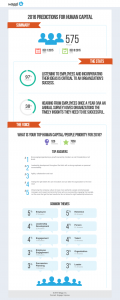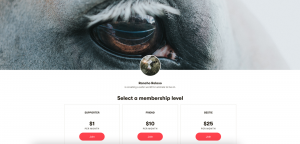The market is quickly evolving, as modern marketers demand integrated marketing functionality that rapidly translates into bottom-line return.
Marketing automation software can improve marketing productivity and increase lead quality. Here’s what you need to know before adopting a marketing automation platform.
Marketing automation is the use of software and web-based services to execute, manage and automate repetitive marketing tasks and processes to more effectively market through multiple channels (i.e., email, mobile, social media, and websites). Marketing automation focuses on the definition, scheduling, segmentation and tracking of marketing campaigns, allowing the marketing and sales organizations to nurture leads with highly personalized content aimed at attracting and retaining customers.
Today, marketing automation is one of the core activities of a marketing department — whether for a small local business or a large consumer or B2B enterprise. But the platforms that power these activities continue to evolve.
Table of contents
Estimated reading time: 13 minutes
What is marketing automation?
Investments in marketing technology continue to be a priority for businesses across the board, as they strive to meet increased demands for personalization and a need to collect, authenticate and analyze rapidly increasing amounts of consumer data to improve the customer experience (CX). For B2B players, this often means using a marketing automation platform.
Most marketing automation solutions provide tools for email campaign development and execution (including landing pages), as well as lead capture, scoring and nurturing. The platforms also typically provide centralized marketing databases and a basic level of reporting on web traffic, visitor behavior and campaign results.
Combined, the core features offered by most marketing automation platforms profiled in this report include:
- Email marketing and landing page development;
- Lead management (i.e., capture, scoring and nurturing);
- Native CRM integration; and
- APIs or app marketplaces for faster martech system access.
The more basic functions of marketing automation have become somewhat commoditized, so platform vendors mostly look to differentiate their offerings based on the ability to scale (especially to new marketing channels), usability, ease of implementation and customer experience features. One area growing especially quickly involves the use of artificial intelligence and machine learning to suggest audiences or messaging.
Platform vendors are also looking to differentiate themselves by offering more support for increasingly sophisticated customers who have adopted the software and who are looking to justify the investment by proving ROI.
All of this means market is quickly evolving, as marketers demand integrated marketing functionality that rapidly translates into bottom-line return. Vendors continue to add more advanced features to provide marketing end-users with the ability to build, track and manage campaigns across channels and/or devices, and monitor the flow of leads as they move from marketing to sales.
These features include, but are not limited to:
- Dynamic content generation (email, landing pages and/or website);
- Email deliverability tools;
- Account-based marketing (ABM);
- Mobile marketing;
- AI-based predictive analytics; and
- Social/lead profile integration.
Dynamic content generation
Virtually all marketing automation platforms provide the ability to create, send and measure personalized email campaigns. Where they differ is in how email, landing page and website content created and personalized. Some vendors offer wizard-based campaign design or content templates, while others provide a more customized approach.
There are also differences in static vs. dynamically generated content, which adjusts on the fly as prospects interact with a website or form. Progressive profiling is often offered to pre-populate forms with known data and uses a drip approach to capture additional prospect information each time they interact with campaigns.
Message deliverability is also an important factor to consider. Some B2B marketing automation vendors offer dedicated IP addresses to improve deliverability, and/or monitor deliverability by including their own email deliverability services or those from partners. Email previewing is an advanced function but may be critical to marketers that want to reach their audience through mobile devices and see what their message will look like on smaller screens.
The market is quickly evolving, as modern marketers demand integrated marketing functionality that rapidly translates into bottom-line return.
Lead management
Lead management comprises three functions: lead capture, lead scoring and lead nurturing. Leads are captured from a variety of sources that feed the marketing automation database, including (but not limited to) website visitors, social media, paid digital campaigns, email marketing respondents, trade show attendees and purchased third-party lists. Tools will vary based on the ease with which additional lead sources can be captured, such as through an open API, or whether the software offers landing page optimization.
Lead scoring assigns a value to each lead based on a predetermined set of rules or criteria. Traditional lead scoring models are generally based on two sets of data values: behavior (i.e., site purchases, browsing, social posts) and demographics/firmographics. Many digital marketing automation tools now offer predictive scoring driven by machine learning, which can incorporate hundreds of data points by sourcing websites, social networks and internal systems such as the CRM and marketing database itself to calculate scores.
Lead nurturing is the process of keeping prospects engaged with the brand through periodic, personalized communications or campaigns until they are ready to buy. Marketing automation software may offer a number of pre-built nurturing steps or actions, as well as allow users to customize their content and process. These efforts are meant to build a relationship between the brand and its prospects, and drive interaction with sales if and when the prospect is ready.
Predictive analytics
Virtually all of the marketing automation platforms profiled in this report provide a standard set of analytics that track quantifiable data such as website visitor activity, pages viewed, time spent on site, emails opened, content downloaded and campaign responses. More vendors are offering predictive analytics and models based on machine learning, which uses algorithms to process data and surface trends or insights that enable marketers to customize visitor experiences and marketing campaigns.
Several platforms have invested in artificial intelligence (AI) to go a step beyond machine learning and use technology to “mimic” human intelligence and recommend marketing actions or outcomes. These may include highly personalized website content or product recommendations based on analysis of consumption trends, on-site behavior, firmographics and CRM data. Other vendors rely on plug-and-play integration with predictive analytics tools to offer greater analytics and personalization capabilities.
Mobile marketing automation
Creating an engaging experience for mobile prospects and customers is a must-have capability. As a result, many B2B marketing automation software include responsive templates for email, landing pages and web forms. Several vendors integrate with email testing tools such as Litmus, to allow users to preview email marketing messages across email clients and devices.
More advanced mobile marketing features include SMS/texting, in-app marketing and remote platform management from mobile devices. In-app marketing features can include “push” notifications or ads based on geography (i.e., geo-fencing or beaconing) or during events. Marketing automation vendors have also expanded platform access to mobile users, moving beyond automated alerts and remote data collection to full platform management.
Most marketing automation software profiled in this report provide a standard set of analytics that track quantifiable data such as website visitor activity, pages viewed, time spent on site, emails opened, content downloaded and campaign responses.
Lead nurturing is the process of keeping prospects engaged with the brand through periodic, personalized communications or campaigns until they are ready to buy.
Account-based marketing (ABM)
Aligning marketing initiatives with sales teams has become a leading account-based marketing (ABM) priority for marketers. The goal is to target marketing programs to prospect or customer buying teams, rather than individuals (who may have moved into new positions or firms.) Most of the time, a B2B buyer is not a single person but a buying group. The larger the purchase, the more people and departments are involved. Marketing automation vendors continue to add new ABM features to their platforms to enable marketers to address the buying group as well as individual members, including enhanced account nurturing and predictive scoring capabilities.
Social/lead profile integration
Most of the B2B digital marketing automation vendors profiled in this report provide some level of social media publishing, sharing and tracking within the platform for networks such as Facebook, Instagram, Twitter and LinkedIn. Some platforms provide more advanced social media tools to monitor social posts and add social behavior to lead profiles, often using social engagement as a scoring factor. Other platforms enable the use of social media sign-on to capture social profile data and build lead profiles.
Native CRM integration
With more businesses seeking to align marketing with sales, native or out-of-the-box integration with CRM systems has become a critical feature for marketing automation systems. Salesforce, Microsoft Dynamics 365, Oracle NetSuite and SugarCRM are some of the most commonly available connectors.
Data is synchronized between the two systems and shared in both directions at frequent intervals. For example, data that is added by a sales rep to an account record in the CRM will be automatically added to the record in the marketing automation tool for marketing end-users to view and act upon, as well.
Third-party software connectivity
B2B marketing automation vendors continue to open their platform architectures through APIs and app marketplaces to offer customers access to an expansive array of third-party software systems. The app marketplaces provide faster “plug-and-play” access between the systems, although there may be additional fees to purchase the marketplace apps.
If a preferred app is not available on a digital marketing automation vendor’s marketplace it doesn’t mean that the two systems won’t connect – it means that some customization will be required. API use does incur additional charges, generally on a per-call basis for each data download
Proactive recommendations based on AI
Martech vendors in many categories, including B2B marketing automation, are working to incorporate functionality that smooths the workflow for marketers using their software. One significant focus is providing users with proactive recommendations or suggestions for best next steps based on aggregated data and historical usage patterns.
Why do you need a marketing automation platform?
Marketers at companies of all sizes can gain these benefits from a marketing automation platform:
- Increased marketing efficiency. Automating time-consuming, manual tasks around content creation, management and personalization; campaign scheduling and execution; data hygiene (i.e. duplicate or inconsistent data residing in various silos); communication with sales; and lead nurturing saves time and improves productivity.
- Enhanced ability to generate more and better qualified leads. Marketing automation can combine multiple criteria, including demographic, firmographic and behavioral data (pages visited, downloads, filled out forms) with a lead scoring system to generate and identify sales-qualified leads.
- A multichannel view of prospect behavior. Today’s digital marketing automation platforms are integrating multiple channels and devices – including social media and mobile — to create more comprehensive prospect profiles and holistic views of prospect behavior.
- Better alignment of sales and marketing goals. Marketing automation software can help align sales and marketing efforts to ensure that sales reps are working with sales-ready leads. By working cooperatively to set scoring parameters and define qualified leads, sales and marketing become one team. Marketing works on building relationships with early stage leads to enable sales to focus their efforts on the most highly qualified prospects.
- Improved lead conversion and ROI. Numerous studies have found that using a marketing automation system can increase conversions. Forrester found that B2B marketers implementing marketing automation experience a 10% increase in their sales-pipeline contribution. Marketing automation can result in a 15% increase in sales productivity as well as a 12% decrease in marketing overhead, according to tech research firm Nucleus Research.
The role of marketing automation platforms
In May of 2019, Forrester’s Laura Cross, VP and principal analyst for demand- and account-based marketing, speculated that MAPs have “not evolved to keep up with the needs of the modern demand marketer.” Indeed, marketing automation platforms are so well-established as to be rarely discussed. For example, it’s difficult to find independent projections on marketing automation spend, with the latest numbers from Forrester projecting global spend to reach $ 25.1 billion by 2023, up from $ 11.4 billion in 2017. However, that was published in April of 2018 as its Marketing Automation Technology Forecast, 2017-2023.
As of yet, though, there’s no sign of marketing automation platforms going extinct. However, companies in the MAP category expanding into areas like “multimedia marketing hubs” or “CRM lead management” or “account-based marketing.” Notably, marketing automation platforms had no spot at all on Gartner’s Hype Cycle for Digital Marketing, 2021. Could this be because it has already transitioned to what Gartner calls the “plateau of productivity”?
Where marketing automation providers seem to be giving up a little bit of territory is from customer data plaforms, which are sometimes taking over the data management and audience segmentation tasks previously handled by MAPs.
At the same time, these CDPs also still feature integrations with marketing automation platforms because they still perform functions that other systems lack.
Will CDP’s replace marketing automation platforms?
The must-have, much-hyped customer data platform (CDP) appears to have its eyes on B2B marketers, promising to handle vast amounts of data to deliver highly-personalized customer experiences.
Adobe’s Real-time CDP announced new features aimed at B2B brands in November 2020, which include a pre-built connector to its B2B Marketing Automation Platform, Marketo Engage. Dun & Bradstreet, with its D&B Lattice CDP, also understandably has a primarily B2B focus.
Though CDP platforms are still relatively new, adoption has been rapid and these tools could eventually pose a threat to marketing automation platforms as they provide some of the same tools and functionalities.
Who’s who in B2B Marketing Automation: The vendor landscape
The enterprise B2B marketing automation market is concentrated among a few cloud vendors, including Salesforce, Oracle and Adobe. Acquisitions by these players aimed at consolidating their positions at the top of the market have now been largely integrated.
Oracle made its acquisition of Eloqua in December 2012, becoming the first to add this capability to its offerings. Salesforce followed by adding Pardot in 2013 when it acquired ExactTarget, which had purchased Pardot the year before. The foundation of Adobe’s capabilities in the space is its 2018 purchase of rival marketing automation platform Marketo for $ 4.72 billion. It had previously bought Magento Commerce for $ 1.68 billion.
2019 saw a great deal of action in the space. The year saw Acoustic formed as a standalone company after IBM spun off its Watson Marketing operation. IBM’s Unica marketing automation platform went to HCL Technologies that year.
Among independent martech providers that year, we saw the acquisition of Mautic by open-source cloud platform Acquia for an undisclosed sum in May of 2019, only to have the parent purchased by Vista Partners in September for $ 1B. Also in May, SugarCRM picked up Salesfusion and re-branded it Sugar Market, in a deal in which terms were not publicly disclosed.
The pandemic year of 2020 saw acquisitions of smaller players, for the most part. CRM company Pipedrive purchased Mailigen for an undisclosed sum in March of 2020. Facebook picked up Kustomer, largely described as a CRM firm but also boasting messaging automation functionality, in November 2020 for a reported $ 1 billion.
December 2020 saw marketing automation/attribution player Springbot acquire Matcha, giving it content management capabilities. Meanwhile, Thryv Holdings acquired Melbourne, Australia-based Sensis in March 2020, rebranding it as Thryv in September 2021.
| Date | Transactions |
|---|---|
| 2021 | – Maropost acquires e-commerce platform Neto in March 2021 for $ 60M plus additional consideration, subsequently rebranding the platform Maropost Commerce Cloud. – Constant Contact purchases SharpSpring for $ 240M, adding to its stable of offerings for SMBs. – ActiveCampaign raises $ 240M in Series C funding that values it at more than $ 3B, following a 2020 round of $ 100M. The company says it plans to invest in product development, expansion and building its partner ecosystem. |
| 2020 | – Springbot buys Matcha. Deal terms weren’t disclosed.
– Facebook acquires Kustomer for a reported $ 1B. – Pipedrive buys Mailigen for an undisclosed sum. Thryv Holdings buys Sensis for $ 200M, |
| 2019 | – Acquia acquires Mautic (terms not disclosed). Vista Equity Partners later (Sept 2019) buys Acquia for $ 1B
– SugarCRM buys Salesfusion (undisclosed amount); rebrands it to Sugar Market. The acquisition followed the company’s buy of Collabspot and preceded its purchase of Corvana. These units are now called Sugar Connect and Sugar Discover, respectively. – Mailchimp acquires Sawa (undisclosed sum) – Infusionsoft rebrands as Keap; launches CRM – j2Global acquires iContact for $ 49M |
| 2018 | – Salesforce acquires Rebel (undisclosed sum)
– Infusionsoft (now known as Keap) secures $ 20M in Series E funding led by ORIX USA Corp. – Adobe acquires Marketo for $ 4.75B – Salesforce acquires Datorama for $ 800M – Adobe acquires Magneto Commerce for $ 1.68B – Salesforce acquires Mulesoft $ 6.5B and CloudCraze (undisclosed sum) |
There will likely be more acquisitions and positioning shifts to come, as marketing automation capabilities are combined with categories like CRM, lead management and campaign automation.
The consolidation kept coming in 2021, with Maropost acquiring e-commerce platform Neto in March 2021 for $ 60M plus additional consideration, subsequently rebranding the platform Maropost Commerce Cloud. In September, Constant Contact purchased SharpSpring, adding to its stable of offerings for SMBs.
Get the in-depth scoop on B2B Marketing Automation in our buyer’s guide. Download it now!
The post What are marketing automation platforms, what do they do, and how is the vendor landscape changing? appeared first on MarTech.
(33)
Report Post





